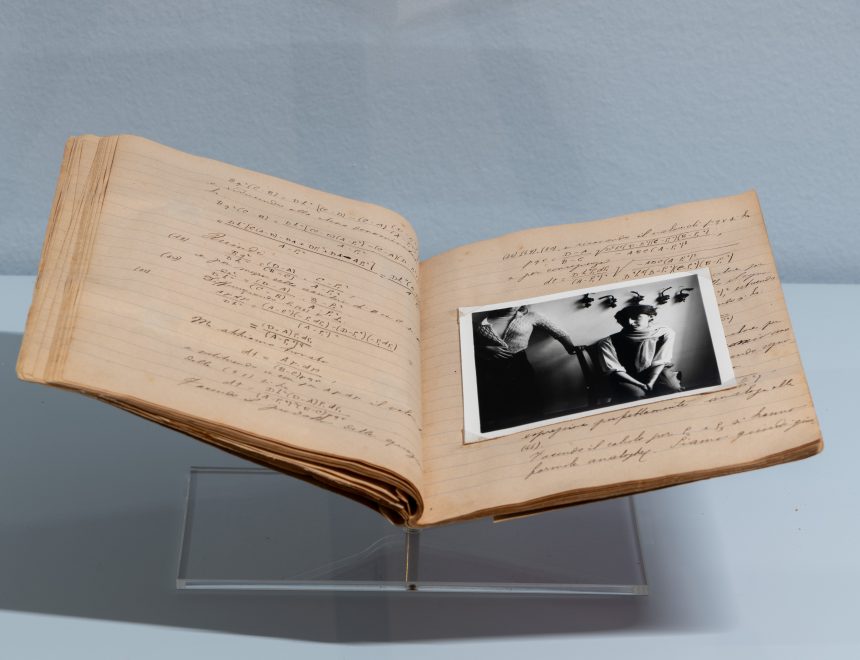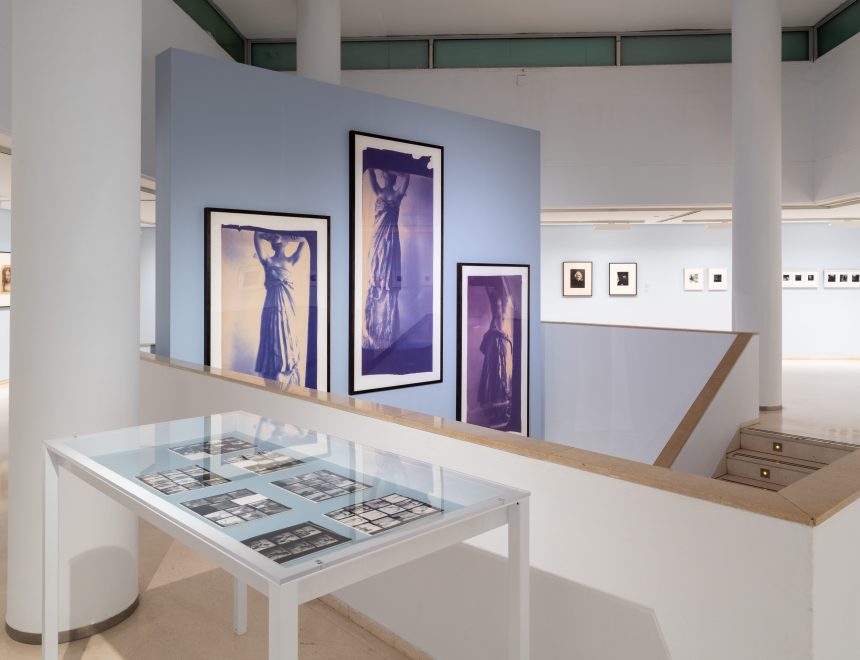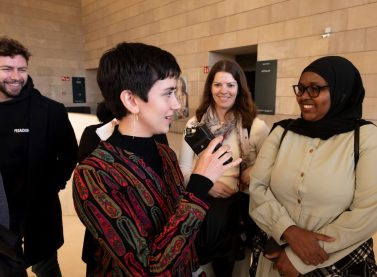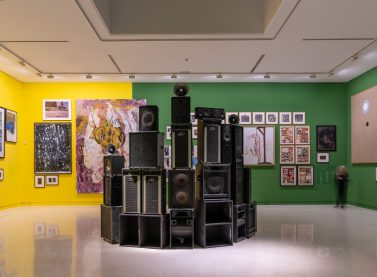A space dynamized by Paco Inclán
ENG
Throughout five editions, POLIGLOTÍA has opened its doors to people from diverse backgrounds and mother tongues to explore the possibilities of the museum as a space for dialogue and exchange of knowledge and experiences from a cultural and linguistic diversity approach.
For the next cycle of POLIGLOTIA, the sessions will again be open to people who are in the process of learning Spanish (from level B, intermediate). IVAM’s exhibitions and installations will serve as didactic and pedagogical resources. The participants’ mother tongues will also play a leading role in these multilingual encounters.
During eight sessions, the dynamics related to language learning will serve to generate a dialogue on issues related to the artistic and educational fields. The last session will be an open-door session to share the group’s work with the public at IVAM.
Dates 2024 / Hours: from 5 to 7 p.m.
October 23
October 30 – * Rescheduled date due to DANA in Valencia
November 6 – *
November 13 – *
November 20, 25 and 27
December 4, 11, 16 (Monday) and 18
Limited places
Those interested should send a brief letter of motivation to reserves_ext@ivam.es, with the subject POLIGLOTIA. Deadline for Registration: until Monday, October 14. Once the selection of participants has been made, all registered participants will be notified of the decision. The acceptance of participation in the group implies a commitment to attend all the sessions.
The letter of motivation must contain the following information:
· Name and surname(s)
· What level of Spanish do you have?
· What languages do you speak?
· What are your hobbies, interests?
· Can you attend the sessions at IVAM on Wednesdays from 5 to 7 p.m.?
CAST
A lo largo de cinco ediciones, POLIGLOTÍA ha abierto sus puertas a personas de diversas procedencias y lenguas maternas para explorar las posibilidades del museo como espacio de diálogo e intercambio de saberes y experiencias desde un enfoque de diversidad cultural y lingüística.
Para el siguiente ciclo de POLIGLOTÍA, las sesiones volverán a abrirse a personas que estén en un proceso de aprendizaje del español (a partir de niveles B, intermedios). Las exposiciones e instalaciones del IVAM servirán como recursos didácticos y pedagógicos. Las lenguas maternas de los y las participantes también tendrán su protagonismo en estos encuentros plurilingües.
Durante ocho sesiones, las dinámicas relacionadas con el aprendizaje del idioma servirán para generar un diálogo sobre cuestiones relacionadas con el ámbito artístico y educativo. La última sesión será de puertas abiertas para compartir con el público del IVAM el trabajo realizado por el grupo.
Fechas 2024 / Horario: de 17 a 19h
23 de octubre
30 de octubre – * Fecha reagendada a causa de la DANA de Valencia
6 de noviembre – *
13 de noviembre – *
20, 25 y 27 de noviembre
4, 11, 16 (lunes) y 18 de diciembre
Plazas limitadas
Las personas interesadas deberán enviar una breve carta de motivación a reserves_ext@ivam.es, con el asunto POLIGLOTIA. Plazo de inscripción: hasta el lunes 14 de octubre. Una vez se realice la selección de los/las participantes, se notificará la decisión a todas las personas inscritas. La aceptación de participación en el grupo implica el compromiso de asistencia a todas las sesiones.
La carta de motivación deberá contener la siguiente información:
· Nombre y apellidos
· ¿Qué nivel de español tienes?
· ¿Qué idiomas hablas?
· ¿Cuáles son tus aficiones, hobbies, intereses?
· ¿Puedes asistir los miércoles de 17 a 19 h a las sesiones en el IVAM?
FR
Au cours de ses cinq éditions, POLIGLOTÍA a ouvert ses portes à des personnes d’origines et de langues maternelles différentes afin d’explorer les possibilités du musée en tant qu’espace de dialogue et d’échange de connaissances et d’expériences, en mettant l’accent sur la diversité culturelle et linguistique.
Pour le prochain cycle de POLIGLOTIA, les sessions seront à nouveau ouvertes aux personnes qui sont en train d’apprendre l’espagnol (à partir du niveau B). Les expositions et les installations de l’IVAM serviront de ressources didactiques et pédagogiques. Les langues maternelles des participants joueront également un rôle prépondérant dans ces rencontres multilingues.
Au cours de huit sessions, la dynamique liée à l’apprentissage des langues servira à générer un dialogue sur des questions liées aux sphères artistiques et éducatives. La dernière séance sera une séance portes ouvertes pour partager le travail réalisé par le groupe avec le public de l’IVAM.
Dates 2024 / Horaires : de 17h à 19h
23 octobre
30 octobre – * Date reportée en raison de DANA à Valence
6 novembre – *
13 novembre – *
20, 25 et 27 novembre
4, 11, 16 (lundi) et 18 décembre
Places limitées
Les personnes intéressées doivent envoyer une brève lettre de motivation à reserves_ext@ivam.es, avec pour objet POLIGLOTIA. Date limite d’inscription : jusqu’au lundi 14 octobre. Une fois les participants sélectionnés, tous les participants inscrits seront informés de la décision. L’acceptation de participation au groupe implique un engagement à assister à toutes les sessions.
La lettre de motivation doit contenir les informations suivantes :
· Nom et prénom(s)
· Quel est votre niveau d’espagnol ?
· Quelles langues parlez-vous ?
· Quels sont vos loisirs, vos centres d’intérêt ?
· Pouvez-vous assister aux séances de l’IVAM le mercredi de 17 à 19 heures

























































